Grade 12: Estevan Riot 1931
Weighing the Causes
It all began when...
In late August and early September of 1931, miners in the Bienfait-Estevan coal fields joined a miners' union and went on strike seeking improved wages & working conditions.
On September 29, 1931, a riot erupted in the town of Estevan.
On this autumn day, carloads of miners from the Bienfait-Estevan coal fields – along with some of their wives and children – ended up facing off against local police and the RCMP on the streets of Estevan.
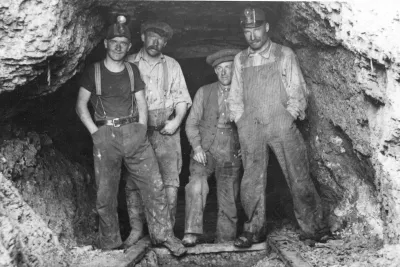
Coal miners at mouth of small mine near Estevan, 1914. PAS Photo R-A5996-2.
Estevan Riot 1931 Photos
On this autumn day, carloads of miners from the Bienfait-Estevan coal fields – along with some of their wives and children – ended up facing off against local police and the RCMP on the streets of Estevan.
Three miners were shot and killed; some other miners and some police officers were injured.
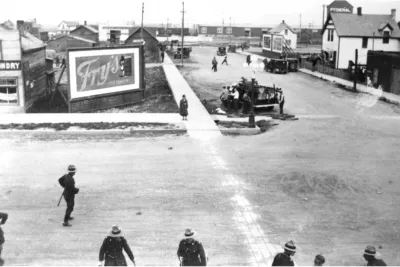
Street scenes during the Estevan riot of September 29, 1931. PAS Photo R-B14216 (1)-(5).
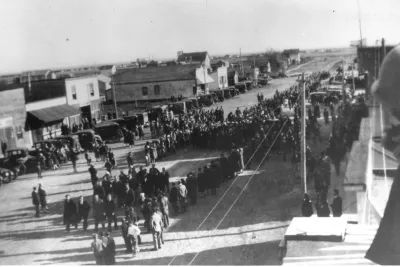
Funeral for three miners killed during the Estevan Riot, 1931. PAS Photo R-A18508.
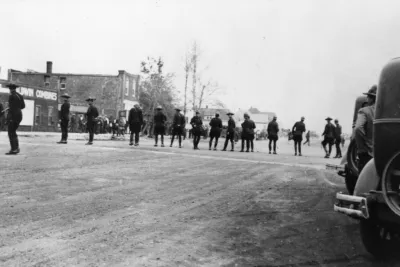
Another street scene during the Estevan riot of September 29, 1931. PAS Photo R-B14216 (1)-(5).
Who or What Caused the Riot
Who or What Caused the Riot
Was it striking coal miners?
Was it unsafe working conditions or low pay in Bienfait-Estevan area coal mines?
Was it a fearful mayor and town council of Estevan, who banned a miners' protest parade?
Was it coal mine owners and operators?
Their company stores? Their company housing?
Was it the Mine Workers' Union of Canada?
Was it Communists?
Was it fiery speeches by union organizers like Annie Buller, Sam Scarlett, or James Sloan?
Was it the government's response to conditions in Saskatchewan's coal mining industry?
Was it a town police force or the RCMP, itching for a fight?
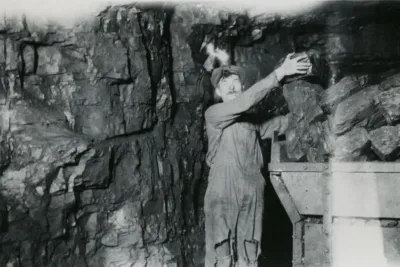
Loading coal in a Saskatchewan coal mine, n.d. PAS Photo R-A937.
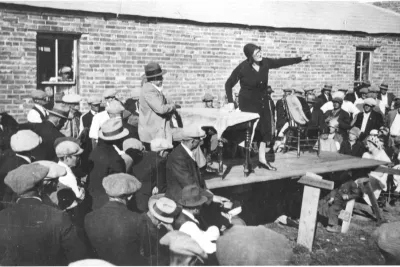
Annie Buller speaking to miners in Estevan, Sept 27, 1931. PAS Photo R-A32584.
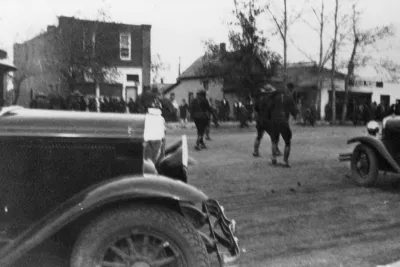
During the riot, September 29, 1931. PAS Photo R-B14216-2.
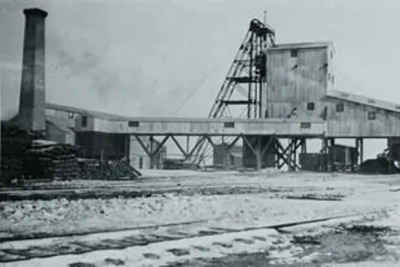
Taylorton - Western Dominion Collieries, 1930. PAS Photo R-A938.
Using Documentary Evidence
Using Documentary Evidence
Examination of primary source documentary evidence created before, during and after the event can help us understand the causes and consequences of the Estevan Riot in 1931.
Historical Thinking Concepts:
Cause and Consequence: Why do events happen, and what are their impacts?
Guidepost 1: Change happens due to multiple causes and results in multiple consequences. These causes and consequences are interrelated and vary in duration.
Guidepost 2: The causes that lead to a particular historical event vary in their influence. Some are more important than others.
Guidepost 3 & 4: There is an interplay of historical actors taking action to cause events and the social context within which the actors operate that impact analysis of cause and consequences of an event.
Guidepost 5: The events of history are not inevitable. Changing an action or condition and the event might have turned out differently.
Adapted from The Big Six Historical Thinking Concepts by Peter Seixas and Tom Morton (Toronto: Nelson Education, 2013.)